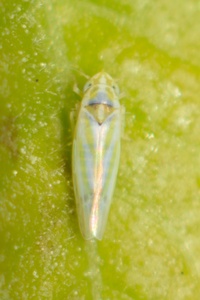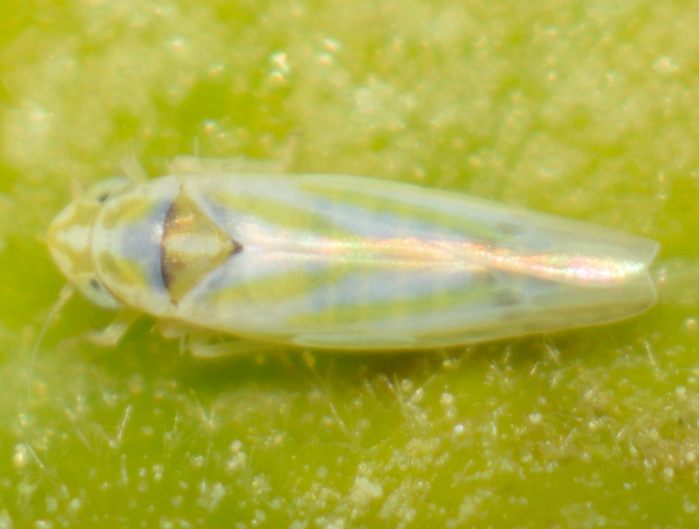
|
|
|
| synonym |
|
| description |
This species has typical coloration for the genus, with bold yellow to red lines on the wings, thorax, and head. The pronotum is either entirely pale with two longitudinal lines or dark with pale lateral margins. The mesonotum is either entirely pale or entirely dark, with the apex concolorous with the rest of the mesonotum. This typically gives the scutellum a dark chestnut to reddish-brown color overall with blacker lateral angles. The face is pale, as is the thorax except for the mesosternum on the underside which is dark; the abdomen is dark dorsally and visisble through the wings. Adults are 2.8 to 3.1 mm long. (Dmitriev & Dietrich, 2009) |
| distribution |
Eastern United States |
| abundance |
One recent record from the Piedmont; likely more abundant in the right habitat. |
| seasonal_occurrence | |
| habitat |
|
| plant associates |
Carya tomentosa, Carya illinoiensis, Querus imbricaria, Quercus shumardii, Acer saccharum, Aesculus sp., Carpinus sp. (3I) |
| behavior |
Can be attracted at night. |
| comments |
This is one of several species that have a dark scutellum, and therefore it could be confused with others. These species with a dark scutellum, in order from most to least dark, are: pfrimmeri (BG), penenoeva (BG), noeva (BG), and aspera. E. pfrimmeri and penenoeva have completely dark scutellums, but in the former the scutellum is blackish whereas in the latter it tends to be a dark chestnut-brown color. Additionally, the black mesonotum is visible through the pronotum in pfrimmeri; in penenoeva, the mesonotum does not tend to appear through as dark. E. noeva has a chestnut to reddish-brown scutellum that has dark lateral triangles, contrasting with the black scutellum of pfrimmeri, but like pfrimmeri the dark mesonotum shows through the pronotum. While the scutellum coloration may be similar between E. noeva and E. penenoeva, besides the previously stated differences in the mesonotum being visible through the pronotum, noeva seems to lack small black dots or smudges near the apical veins, whereas penenoeva can have these spots. E. aspera has a brown to dark brown scutellum, and in var. 'kanensis' the upper apical cell of each wing is dark. Finally, E. noeva has a pale abdomen dorsally, whereas the other three species have dark abdomens dorsally. |
status |
[Native:]
[Introduced:]
[Extirpated:] | | list_type |
[Official:]
[Provisional:] |
| adult_id | Unmistakable and widely known Identifiable from good quality photos of unworn specimens
Identifiable from photos showing undersides, or other specialized views [e.g., legs, face]
Identifiable only by close inspection of structural features or by DNA analysis NULL |
| nymph_id | Unmistakable and widely known Identifiable from good quality photos, especially where associated with known host plants
Identifiable from close inspection of specimens or by DNA analysis
Identifiable only through rearing to adulthood NULL |
| G_rank |
|
| S_rank |
|
| rank_comments |
|
| tribe |
Erythroneurini |
| subgenus |
|
Species Photo Gallery for Erythridula penenoeva No Common Name |
 | Photo by: Scott Bolick
Forsyth Co.
Comment: E. penenoeva |  | Photo by: Scott Bolick
Forsyth Co.
Comment: apparent state record |
|

 »
»

 »
»